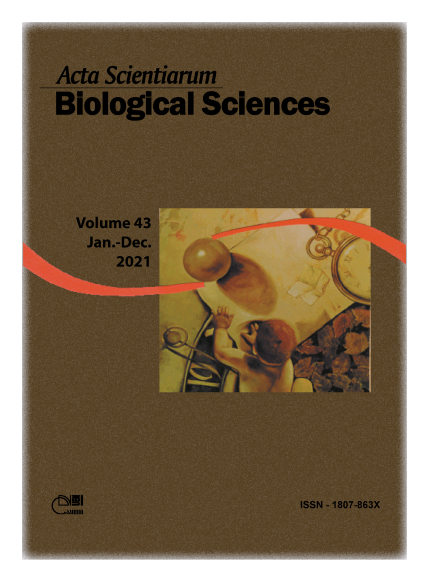Post-larval Colossoma macropomum (Characiformes, Serrasalmidae) show better performance in excavated than concrete tanks under different feeding strategies
Resumo
As the global human population increases, the demand for food grows and, consequently, practices such as aquaculture have become more common. Colossoma macropomum (Cuvier, 1818) is a native Amazonian species, considered to be the second most cultivated fish in the country. We compared the development of post-larval C. macropomum of different ages, submitted to combinations of food management on a commercial production scale. Two experiments tested the delivery of i) 55% crude protein feeding, ii) natural feeding by fertilizing the water and iii) a combination of both during hatchery in concrete tanks (10 m 2) or excavated soil-bottom tanks (4502) subjected to distinct fertilization protocols and storage densities. The weight and length of the post-larvae grown in ponds were greater (p < 2.0x10-16) for the mixed treatment, except during the first week of larvae, in which values were similar (p ≤ 1.76x10-14) to the fertilization treatment. Concrete tanks with fertilization management without feeding were similar to the mixed treatment (p ≤ 1.38x10-7); however, during the first week of external larvae production, the growth performance under fertilization treatment was superior to the others. Food management in excavated tanks, when compared to the same management performed in concrete tanks, registered higher averages for the productive variables of C. macropomum cultivated at the density of 200 post-larvae m-2 in all evaluated food strategies. It was verified that post-larvae of C. macropomum did not develop well in the first weeks of life when receiving only formulated diets. The increase in natural food availability through fertilization positively influenced the performance of the species, which can remain without feeding until the second week of life.
Downloads
DECLARAÇÃO DE ORIGINALIDADE E DIREITOS AUTORAIS
Declaro que o presente artigo é original, não tendo sido submetido à publicação em qualquer outro periódico nacional ou internacional, quer seja em parte ou em sua totalidade.
Os direitos autorais pertencem exclusivamente aos autores. Os direitos de licenciamento utilizados pelo periódico é a licença Creative Commons Attribution 4.0 (CC BY 4.0): são permitidos o compartilhamento (cópia e distribuição do material em qualqer meio ou formato) e adaptação (remix, transformação e criação de material a partir do conteúdo assim licenciado para quaisquer fins, inclusive comerciais.
Recomenda-se a leitura desse link para maiores informações sobre o tema: fornecimento de créditos e referências de forma correta, entre outros detalhes cruciais para uso adequado do material licenciado.












1.png)




3.png)













